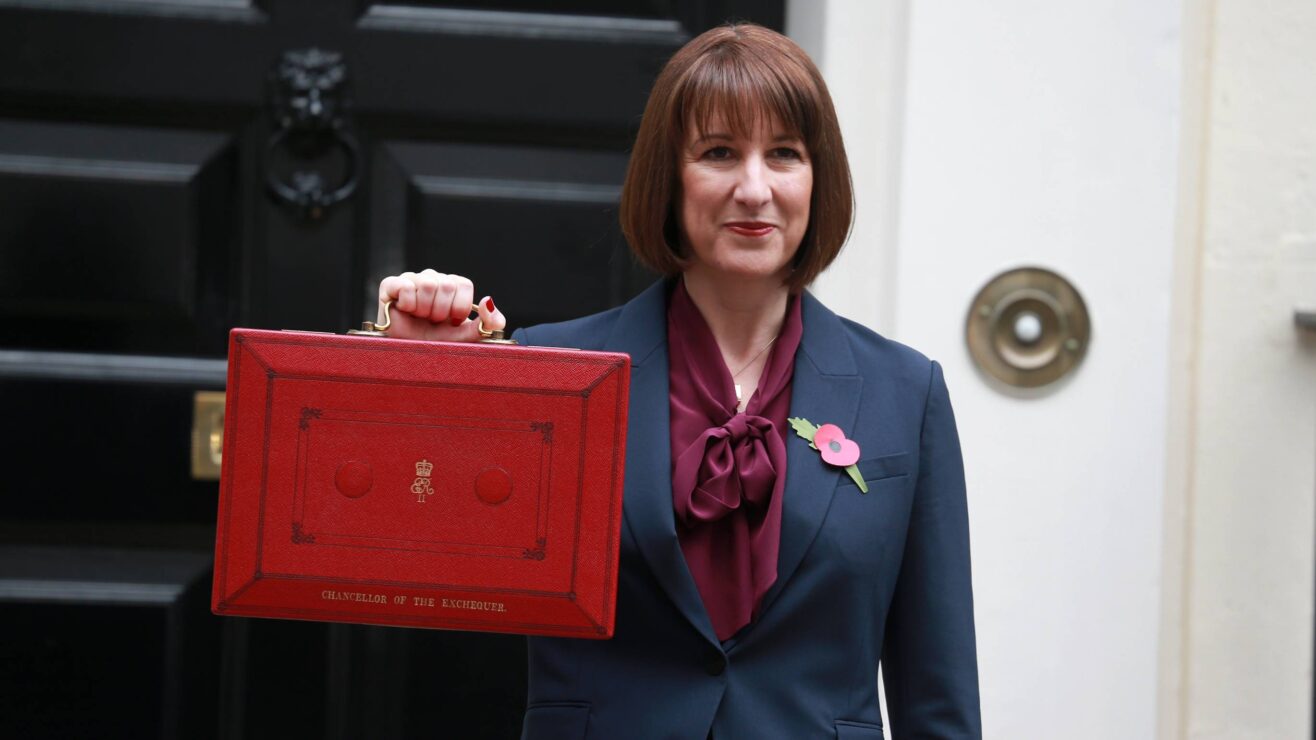As we peer into our crystal ball to discern the shape of 2023 it’s hard not to conclude that the higher education sector might be the only part of the British state that’s still working as it should.
There’s (probably) a proverb about the inadvisability of speculating about future events at a time of political change. And as politicians scramble to look in control of events, we’re not overly optimistic about the likelihood of a fresh new English HE policy agenda or funding in 2023.
So instead, at Wonkhe we’re wondering about the conversations we think might be happening on campuses – the issues that most directly affect universities’ mission, thinking, and the experiences of university staff and students.
James Coe sets out the choices facing cash-strapped universities, and Michael Salmon warns of closer scrutiny on international recruitment. Jim Dickinson worries about the residential model of higher education, and Sunday Blake wonders where all the students have gone. David Kernohan asks why despite some politicians’ best efforts higher education remains an overwhelmingly popular choice among young people, and Debbie McVitty predicts a turn towards Labour as the main parties compete to be taken seriously ahead of a General Election next year.
Cash strapped – James Coe
Universities are facing another difficult year in light of ongoing high levels of inflation, erosion of the unit of resource, and associated climbing cost of living. There have, broadly, so far been three responses. The first has been to significantly increase financial and associated support for students like the opening of warm spaces 24 hours a day. The second has been to reduce costs, in some cases through programme closures, which may realise long-term savings. The third is to increase recruitment for students outside of the fee cap, especially international students.
There is not unlimited demand for all programmes at all universities and there are only so many costs that can be saved. If this is to be an era of long-term financial stress it’s likely we’ll see five further trends:
- Universities are likely to try and conserve more of their resources and put them into reserves. This may of course mean savings need to be found from elsewhere in the institution.
- There will be a slow down in capital investment. The dust has yet to settle on the permanence of hybrid learning and loaning money is now significantly more expensive. This will have impacts on supply chains particularly with small businesses.
- There will be more aggressive attempts to recruit international students. This will likely include expanding within well developed student markets and engaging more frequently with emerging markets.
- There will be further course closures. There are 38 providers that had less than 60 days of net liquidity in the 2020-21 financial year. Even where demographics seem to offer a larger pie overall, if providers respond to the financial squeeze by growing their student numbers they will inevitably take market share from other providers.
- The civic role of universities will tilt from a general civic good to deeper consideration of their role in arresting economic and social inequalities. Although they will be under pressure as they are relatively well funded universities are still the only institution in many places that can convene local actors, fund research, and employ on an enormous scale.
There will be new demands placed on university leaders, both to manage the implications of financial challenges on campuses, and to continue to demonstrate the impact of universities albeit within a reduced financial envelope. This could be an era of consistent contraction without government intervention. This is a scenario that a significant number of staff in leadership will not have experienced and will have to adapt to quickly.
Nation shall recruit unto nation – Michael Salmon
Having one threatened crackdown on international student recruitment per Prime Minister might have seemed like a fair deal a year ago, but little did we know how often that would equate to in practice. Bombastic rhetoric around substandard courses being propped up were par for the course at a surreal Conservative Party conference in October under the Truss “administration”. When the issue reared its head again in late autumn, in briefings from Rishi Sunak’s Number 10, it was at least more tepid in character.
The subsequent walking back by the government of any immediate plans to reduce student and dependant numbers may have seemed like a mild cause for celebration. The sector though should not give too great credence to lukewarm public pronouncements from members of the government in favour of international students. As Jim spotted over Christmas, further restrictions on student visas and dependant numbers are still very much on the cards, probably in the form of significant rises to income thresholds for dependants.
Whether such narrowly conceived policy levering serves to create any meaningful change appears doubtful. The more likely consequence is additional debt and financial hardship for incoming students. Students literally betting the farm on international university study – as explored in this article on international recruitment practice in Canada – does not make for a good look.
The idea of widening access and social justice forming a part of institutions’ international strategies still appears a long way off as fees, living costs and visa charges rise – and this is only exacerbated by the falling unit of resource and the increasingly desperate need for cross-subsidy between home and international.
Should we expect to see hostility to international student recruitment intensify in 2023? The Telegraph’s “scoop” that agents in India used by UK universities were helping students to arrange visas for their family members and extolling the benefits of the graduate route failed to make waves – primarily because neither of those services is particularly scandalous.
But the increasing use of agents for international recruitment – and the sizeable sums of money changing hands that this entails – has all the possibility of being the next line of media attack. Digging more deeply into what universities are paying commission for, and how much could well be the source of negative headlines this year.
The sector is caught between two stools at the moment, with recruitment from China coming under fire on the grounds of security and sustainability, and recruitment from literally anywhere else viable provoking criticism over the students’ infuriating insistence on having families and wanting jobs.
Threading that needle looks increasingly complicated in 2023. Could it be time for universities to lean into the coming demographic bulge in home students? If only that made any financial sense.
Homes under the hammer – Jim Dickinson
We can choose, as all four UK nations are doing right now, to finance mass participation in higher education through profits generated by international student fees. We can also choose, as all four UK nations are doing right now, to maintain a predominantly residential and in-person model of higher education participation. It’s not clear that we can do both.
When a university recruits a full time, in-attendance student who is home domiciled and living away from home (or independently and not from the area), or is an international student, we should assume a need for that student to be able to find accommodation at a reasonable cost relative to the income they can access, a reasonable distance from the campus where the programme is based, and at a reasonable standard of quality and safety to enable living and study.
And the problem is that we’ve run out.
Add up last year, this year and next year, and the total number of new bedspaces into the private halls market – one whose financing models assume rich Chinese students rather than the more modest incomes of the growth markets – is just 65,000. Set that against the growth in visa issuance – which looks set to top 400,000 more than two years ago – and something obviously has to give. Even if the sector succeeds in slowing safety and quality reform in the private rented sector just to keep supply going, what does that say about us?
In the short term, while the sector waits to see if international demand will be curtailed by the Home Office or home domiciled demand curtailed by DfE and its equivalents, few will want to invest in any infrastructure – as temporary classrooms, timetable intensification, two and three in a bedroom and turning blind eyes to facets of in-person participation prevail. Regulators will talk tough, and may even scalp the odd bit of egregious overcrowding on a PGT course or two. But the headline numbers won’t lie.
In the longer term, the country will need to choose whether to reduce participation, reduce migration or house more people. It is possible that higher education will get more bedspaces built – but if that comes at the expense of addressing the wider housing crisis that the country faces, the sector should never be forgiven. Being a big “anchor” for a local community carries responsibilities. One of them should be figuring out how to structure, deliver and finance mass higher education without harming the communities we purport to serve. Truly “civic” universities will lead that debate locally.
The estate of it all – Sunday Blake
It was practically impossible to have a quick scroll on Twitter last term without seeing a picture of an empty lecture hall tweeted out by a frustrated lecturer. University staff were required to be back on campus but student in-person engagement never returned to pre-pandemic levels, leaving staff wondering whether to deliver lectures to empty rooms or just take the hour to have a little cry.
It also seems that some universities sold or repurposed some of their estate during the pandemic – almost certainly with the aim of conserving scarce resources – but with an inevitable uptick in complaints about hot desking from university staff and postgrads. Working from home remains an elusive goal for some staff and a nightmare to escape from for others. In sum: who is in what space, who can be in what space, and who wants to be in what space, is still in flux.
There is a multitude of reasons why students might not be on campus: rail strikes and the bus driver shortage; a decline in student mental health impacting motivation; more mature students who have more responsibilities and pressures on their time than school leavers; the general increase in cost of living leading to more part-time work and skipping non-mandatory contact time to save on knock-on costs like travel and food; increased cost of renting meaning more students are living further away from campus or remaining in the family home. There will be no single comfortable explanation or easy fix.
A lot of the conversation and debate around on/off campus learning and working focuses on digital solutions. Here’s just one example on Wonkhe last month of the ongoing discussion about the ways in which complex university IT infrastructures can be streamlined for the benefit of staff. On pedagogy, some students’ unions are arguing that online assessments that they believe offered a more inclusive approach during the pandemic should be adopted for the long term.
There’s a way of talking about estates and capital investment – seen recently over at UCU – that denigrates universities’ supposed fixation with “shiny buildings” and sets this against the needs of staff and students. But both are important and neither is mutually exclusive. New buildings are needed to replace estate that is not fit for purpose and much capital spend goes on updates to existing facilities – including to facilitate accessibility – and investment in technology as well as new builds.
Universities can’t just have their heads in the (virtual) clouds to solve the various engagement issues – work is also required down on earth. What’s needed is to bring together conversations about estate and technology; pedagogy and students’ lives; business imperatives, student and staff demographics, and inclusion.
If students are picking up part-time hours and commuting in when they can, then campus services such as libraries, catering, and social spaces will need to cater for this. They need to be energy efficient and they need to be open longer. These buildings will require extra security, cleaning, and other staffing.
If rail strikes, train delays, and the shortage of bus drivers continue then there may be further pressures on campus and inner city car parking as students resort to more independent modes of transport. And as the local student housing issue intensifies, universities will need to give some thought to how they will house a more peripatetic student population, and the impact this will have on these students’ sense of belonging and their relation to the wider community – as well as the confidence and engagement of the staff who are doing their best to teach them.
Why is university so persistently popular? – David Kernohan
Young people still want to go to university. Specifically, they want to go to university to take a full three or four year undergraduate degree.
There’s a lot of policy making firepower on the way aimed at making this inconvenient fact less inconvenient. There’s a number of well-funded suggestions that young people should really want to do more explicitly vocational courses, or shorter courses spread out over a lifetime, or courses at new kinds of providers delivered in new ways. But the majority of higher education, and – indeed – the majority of growth in higher education, comes from three year degrees at traditional universities.
These kinds of courses at universities in the UK are popular across the world. Even though UK higher education is an outlier in a number of ways – a three year degree is internationally unusual, as is the speed and nature of discipline specialisation, and the unique history of higher education in England particularly means that institutional esteem is mixed up with age and marketing clout in all kinds of unusual ways – it is clearly something with a lasting popularity. Students at UK providers are generally more satisfied, and less likely to leave their course, than international peers.
What’s odd about this is that nobody really knows why the UK university undergraduate degree remains so popular. You don’t have to dig very far to find any number of anecdotal horror stories – ranging from the ongoing perception that universities are merely devices to teach people to be left wing, through stories of employers moving away from graduate recruitment, a middle class scramble for degree apprenticeships, over to pressures on student and university finances, right across to the fundamental attack on the quality and value of a university education.
It is not normal – either internationally or historically – for a generally well regarded part of the education system to face the kind of sustained attack that we’ve seen in the UK over the past five or so years. And it is certainly not normal that these attacks have not worked. Demand is high and rising, the various output and satisfaction metrics remain broadly where they should be.
So whether it is parental expectations, a sense of a right of passage, a route to employment or social status, or a chance to take a part in the well-told story of student life – we need to talk about better ways to listen to students and applicants, and take steps to make sure they have the chance to find what they are looking for.
Labouring for votes – Debbie McVitty
Even those of us living under a rock (baby-shaped, in my case) for the second half of 2022 couldn’t fail to have noticed a higher than usual degree of political turmoil in the Conservative Party in the autumn – and an associated significant bump in the polls for Labour.
That doesn’t make the results of the next General Election a foregone conclusion, but Labour is clearly back in the game. Expect the policy debate to heat up in the year ahead as both parties attempt to establish a sense of forward momentum and, dare we hope, re-occupy the political centre ground.
Both the main parties now have thoughtful leaders whose instincts tend away from the populist and towards the development of credible and workable policies. Both are working to re-establish voters’ confidence in their parties. And while we’re unlikely to see a detailed agenda for higher education emerging on either side, the overall shift is good news for universities and policy units seeking to disseminate their evidence and influence the political direction of travel.
It’s not exactly a cheering vista, with a pervasive sense among voters – caused by inflation, cost of living, waiting times in A&E, strikes, small boats in the Channel – that the country is in disarray. But the argument will be won by the party that has the more compelling long term vision and policy plan for renewal that gives voters reason to be hopeful about the future.
The Prime Minister’s new year speech made positive noises about “innovation” and repromoted existing investment in R&D. Sunak hopes to set his stall out as a champion of education reform, and while his initial big idea of young people studying maths up to 18 may not be directly focused on universities, the wider question of the nature of future jobs and the core numeracy skills required to flourish in them is one that universities will certainly have views on. While the Johnson government’s post-18 agenda may have been pushed into the long grass, it hasn’t disappeared entirely. Dusting off and brushing up the arguments on technical education, skills, and apprenticeships ahead of policy movement in the year ahead would be smart.
But for those universities looking beyond politics as usual, it is the Labour Party that offers the opportunity for fresh thinking. Keir Starmer’s new year speech was delivered at Here East in Stratford – “a campus for innovators, disruptors, visionaries and locals” in which universities play a key role.
Starmer’s only direct commentary on higher education was a refusal to be drawn on the question of Labour’s position on undergraduate tuition fees. But the bigger picture for Labour is about reform of national government and the adoption of “national missions” to be announced in the weeks ahead, alongside a cheeky co-option of the catchphrase that helped to win the Brexit argument, offering devolution of decision-making to local areas as a means for Britain’s regions to “take back control”. The fees question will need some sort of an answer though before the next election, even if it’s pushed to a full review intended to report back to a new Labour administration.
And if we take at face value Starmer’s impatience with a style of centralised politics in which problems are “passionately described” but not acted on, then Labour is in the market for some creative policy thinking. In the year ahead universities will be hedging their bets by positioning themselves as influential partners to a possible future Labour government and powerful local civic actors in any future devolved system. Whether or not your money or heart is with Starmer as a future PM, a credible opposition has the power to move the dial in policy debate – and that’s good for everyone.












